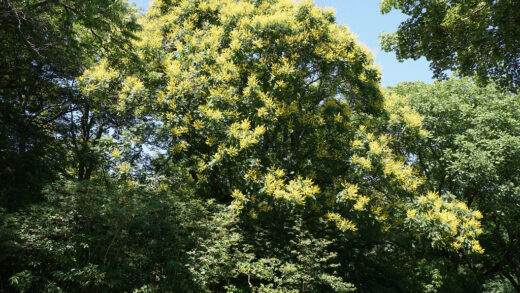The provision of adequate light is a fundamental and non-negotiable requirement for the successful cultivation of the clusius-tulip. This elegant species has an innate need for bright, direct sunlight to fuel its growth, produce its characteristically vibrant flowers, and, most importantly, to perennialize and return year after year. The intensity and duration of sunlight the plant receives during its relatively short spring growing season directly impacts its ability to store energy in the bulb for the subsequent year’s display. Therefore, selecting a planting location that maximizes sun exposure is one of the most critical decisions a gardener can make to ensure the long-term health and vigor of these beautiful tulips.
At its core, the clusius-tulip is a sun-loving plant, a trait shaped by its native habitat on open, rocky slopes where it is exposed to unfiltered sunlight. To replicate these conditions in a garden setting, a position that receives at least six to eight hours of direct sun per day is considered ideal. This full-sun exposure drives the process of photosynthesis, where the plant’s foliage converts light energy into the chemical energy needed for all of its life processes. Without sufficient light, the plant will be weak, the stems may be leggy and unable to support the flowers, and the blooms themselves will be smaller and less impressive.
The importance of sunlight extends far beyond the flowering period. After the petals have fallen, the leaves continue to play a vital role, acting as solar panels that gather energy to replenish the bulb. This post-flowering phase is arguably the most critical for the plant’s long-term survival. If the location is too shady, or if the foliage is shaded by emerging companion plants, the bulb will not be able to store enough food reserves. This energy deficit will result in a diminished performance the following year, or the bulb may fail to bloom altogether.
Consequently, planning for the light needs of the clusius-tulip involves thinking about the garden’s light patterns throughout the spring season. It means choosing a spot that is not only sunny when the tulips are in bloom but remains so for the several weeks afterward while the foliage is maturing. This foresight in placement ensures that the bulbs have every opportunity to complete their life cycle successfully, rewarding the gardener with an enduring and multiplying display of spring color.
The importance of full sun exposure
Full sun exposure is the gold standard for growing clusius-tulips, and achieving this is crucial for optimal performance. A location that is bathed in direct sunlight for the majority of the day provides the energy required for the most robust growth and prolific flowering. In a full sun site, the stems will be strong and upright, the flower colors will be at their most intense and vibrant, and the overall health of the plant will be significantly enhanced. This is the condition that most closely mimics their natural alpine and Mediterranean habitats.
More articles on this topic
The quantity of light has a direct correlation with the quality of the bloom. Insufficient light forces the plant to stretch and reach for the sun, a phenomenon known as etiolation. This results in long, weak stems that may flop over, especially after rain or in windy conditions. The flowers themselves are often smaller, and the plant may produce fewer blooms per bulb. In essence, a lack of sun puts the plant under stress, forcing it to expend its limited energy reserves on simply surviving rather than on producing a spectacular display.
Furthermore, ample sunlight plays a significant role in disease prevention. In a sunny, open location, air circulates more freely around the plants. This helps the foliage to dry off quickly after spring showers or morning dew, creating an environment that is less hospitable to the fungal diseases that thrive in damp, stagnant conditions, such as the dreaded tulip fire. Sunlight itself also has a sanitizing effect, helping to suppress the proliferation of fungal spores on the plant and soil surfaces.
Therefore, when scouting for a planting location, it is essential to observe the path of the sun across your garden during the spring months. The ideal spot will be an open area, away from the shade cast by buildings, dense evergreen trees, or structures. South-facing or west-facing slopes and beds are often excellent choices as they typically receive the most prolonged and intense sun exposure throughout the day, providing the perfect stage for these sun-worshipping tulips.
The deciduous shade advantage
A clever strategy for providing clusius-tulips with the light they need is to take advantage of the changing canopy of deciduous trees. Planting tulips underneath trees that lose their leaves in the winter can be a highly successful approach. In the early spring, when the tulips emerge and go through their entire growth and flowering cycle, the branches of the deciduous trees are still bare. This allows the full, unfiltered spring sunlight to reach the ground, providing the tulips with all the light they require during their most active period.
More articles on this topic
This synergy works beautifully because the timelines of the tulip and the tree are perfectly complementary. By the time the tree begins to leaf out fully in late spring and cast a dense shade, the tulips have already finished flowering. The foliage is then left to mature in the dappled light of the emerging canopy, and the bulbs enter their summer dormancy just as the shade becomes most profound. This natural cycle provides sun when it is needed and shade when the ground benefits from being kept cool and dry.
This planting strategy allows you to incorporate clusius-tulips into woodland garden settings or at the base of ornamental trees where summer-blooming, shade-loving plants might typically be found. It expands the range of possibilities for garden design, allowing for a layered, seasonal display. The bright jewels of the tulips can illuminate the ground before the hostas, ferns, and other shade perennials have fully unfurled, creating a dynamic and evolving garden picture.
However, it is important to choose the right kind of deciduous tree. Trees with a high, light canopy, such as birches, locusts, or Japanese maples, are ideal. Avoid planting under trees with very dense, shallow root systems, like some maples or beeches, as the tulips would face intense competition for water and nutrients, in addition to the eventual shade. The key is a partnership that benefits the tulip’s light requirements without introducing other significant environmental stressors.
Light requirements after flowering
The period after the clusius-tulip has finished blooming is critically important, and the plant’s need for sunlight does not end when the petals fall. For the several weeks that the foliage remains green, it is working diligently to photosynthesize and create the energy that will be stored in the bulb for the next year’s growth and flowering. It is during this time that the bulb is essentially “recharging its battery.” Cutting off the light supply prematurely during this phase will result in a severely weakened bulb.
For this reason, it is crucial that the foliage continues to receive as much direct sunlight as possible until it begins to yellow and wither naturally. This is why site selection must account for the light conditions not just in early spring, but in mid-to-late spring as well. Be mindful of taller, later-emerging perennials or annuals that might be planted nearby. If these neighboring plants grow up and shade the tulip foliage too quickly, they can interrupt this vital energy storage process.
Good companion planting involves choosing neighbors that will not overwhelm the tulips. Low-growing groundcovers or perennials that are still small when the tulip foliage is active are excellent choices. Plants like creeping phlox, sedums, or certain types of hardy geraniums can coexist beautifully, allowing the tulip leaves the space and light they need to complete their work. This thoughtful pairing ensures the long-term success of a naturalized tulip planting.
The gardener’s patience is essential during this phase. The fading foliage may not be the most attractive feature in the garden, but its presence is non-negotiable for the health of the bulb. Resisting the urge to tidy up by cutting or braiding the leaves is a key discipline. Allowing them to bask in the sun for as long as they need is the best possible care you can provide to ensure a spectacular return performance the following spring.
Consequences of insufficient light
The consequences of planting clusius-tulips in a location with insufficient light are predictable and disappointing. The most immediate and obvious symptom will be a lack of flowers. A bulb that does not receive enough light to fully recharge its energy reserves simply will not have the resources to produce a bloom the following year. It may send up a few weak leaves, or it may not emerge at all. This “flowering failure” is one of the most common complaints from gardeners, and inadequate sun exposure is very often the root cause.
Even if the plant does manage to flower in a partially shaded location, the display will be a shadow of its potential. The stems are likely to be weak and elongated as they stretch towards the available light source, a condition known as etiolation. These leggy stems are often unable to support the weight of the flower, causing them to bend or break easily. The flower colors may also appear washed out and less vibrant than those grown in full sun.
Over time, planting in shade will lead to the gradual decline and eventual disappearance of the tulip colony. Each year, the bulb will be slightly weaker than the last, until it no longer has the energy to survive. The bulbs will fail to produce the offset bulblets needed for naturalizing and spreading, so the clump will shrink rather than expand. This slow decline can be frustrating, as the gardener may not immediately realize that a lack of light is the underlying problem.
In summary, light is not a preference for the clusius-tulip; it is a fundamental necessity. There is no substitute for adequate sun exposure. If your garden is predominantly shady, it is better to grow these tulips in sunny containers that can be placed in the brightest part of your property. Attempting to grow them in a shady border will almost certainly lead to a short-lived and unsatisfactory result, highlighting the importance of matching the right plant to the right place.




















